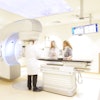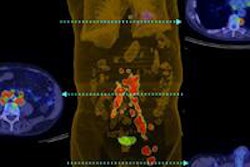CHICAGO - Having a consultant diagnostic radiologist as a member of a radiation oncology treatment planning team can help improve the accuracy and appropriateness of radiotherapy for cancer patients, according to study results presented on Tuesday at the RSNA annual meeting.
The inclusion of a diagnostic radiologist should be considered a new model of care as radiotherapy planning imaging becomes increasingly complex, recommended Dr. Noel Young, a radiologist at the University of Western Sydney in Australia.
Radiation oncologists are using increasingly complex cross-sectional imaging exams such as CT, MRI, and PET/CT scans to improve the accuracy of their radiotherapy planning contours. However, many do not receive much formal training in interpreting these studies. Additionally, there is a need for more reliable imaging review by radiologists who interpret these advanced imaging scans on a daily basis, according to Young and co-author Dr. Marion Dimigen, from the department of radiology at Liverpool Hospital in Sydney.
Young and colleagues undertook a study to formally quantify the clinical benefit of having a dedicated in-house radiologist for the radiation oncology department at Liverpool Hospital's Cancer Therapy Centre. The study's objective was to determine if a radiologist did enhance the interpretation of oncologic imaging and improve the accuracy of contouring and, if so, to what extent.
The group attempted to measure this effect during a nine-month period of time from June 2011 through January 2012. A radiology fellow attended two formal meetings, at a total of eight hours per week, in the radiation oncology department to provide imaging advice and perform contour review for quality assurance audit meetings. The radiologist was also available on an on-call base for individual consultation, which could be scheduled online.
A total of 49 consultation sessions were conducted and 56 patients' scans were reviewed. For consultation sessions, the clinical staff member who requested the consultation completed a questionnaire that asked why the consultation was requested and to explain the outcome of the meeting.
Nearly half of the consultation requests (42%) were to review diagnostic images, followed by requests to assess the target volume of planning images (28%). Evaluating normal tissue volume represented 16%.
One-fourth of the proposed treatment plans, representing 14 patients, were changed as a result of the consultations. Most were changes in target volume, while the rest were changes recommended for normal tissue volume. In 18% of the cases, further investigation was undertaken.
In one case, a planning CT exam revealed a vertebral lesion in a patient who might have developed metastatic prostate cancer. Because a prior CT had revealed the same lesion, which had been diagnosed as a benign tumor, the patient was able to avoid an unnecessary biopsy.
In another case, after reviewing the images of a patient with Merkel cell carcinoma, the radiologist added a lymph node group to the target area.
For 55% of the cases, there was no change in management. However, the radiologist provided volume assistance in 26.6% of these cases.
Radiation oncologists overwhelmingly requested consultations, at 88%, Dimigen said. Radiation therapy staff was the least likely, at 1%. Radiation oncology registrars made 11% of the requests.
Another interesting finding was that if the radiologist requested was not onsite, the requesting individuals proceeded to find another radiologist working in the hospital that day to consult. This occurred 77% of the time when the "designated" radiologist was not onsite.
Contour accuracy, if requested, took place during the weekly quality assurance audit meetings, where the CT images of 94 patients were reviewed. A total of 19 patients' exams had contour accuracy questioned, and changes were made in contour management for six patients.
"Contour accuracy is essential for conformal radiotherapy techniques such as intensity-modulated radiation therapy," Dimigen noted. "The addition of a consultant diagnostic radiologist to the radiation oncology team was very well accepted, and the oncology staff was appreciative and open-minded about having changes made to their target planning."
"This study may be the first to quantitatively document the valuable impact of the role of a radiologist, and I hope that inclusion of an onsite dedicated consultant radiologist will become a new standard of care adopted by cancer treatment centers," she said.
"Having more clinical interaction between radiology and clinical medicine is the way of the future," Young concluded.



















